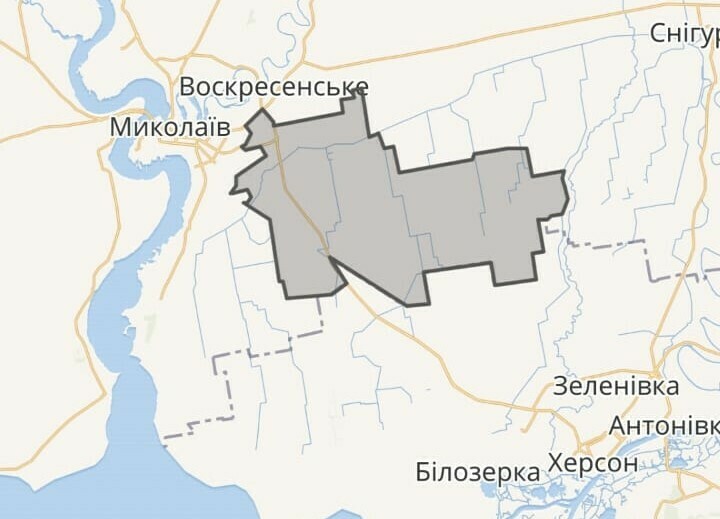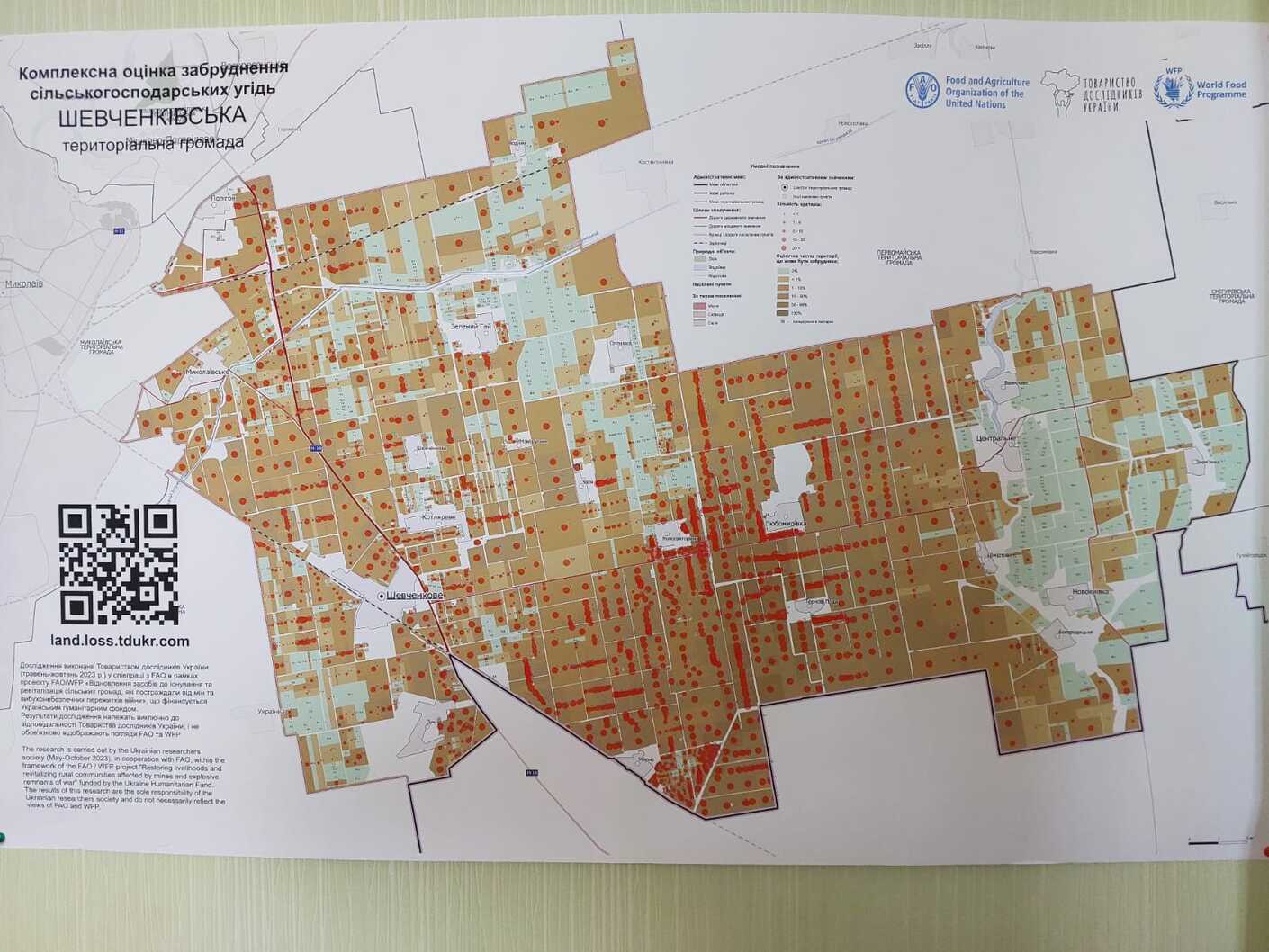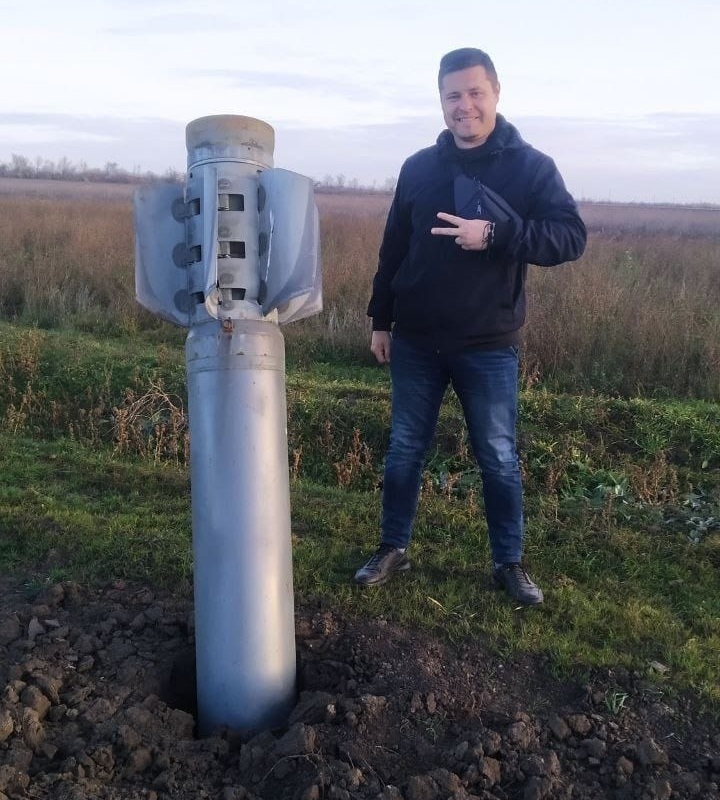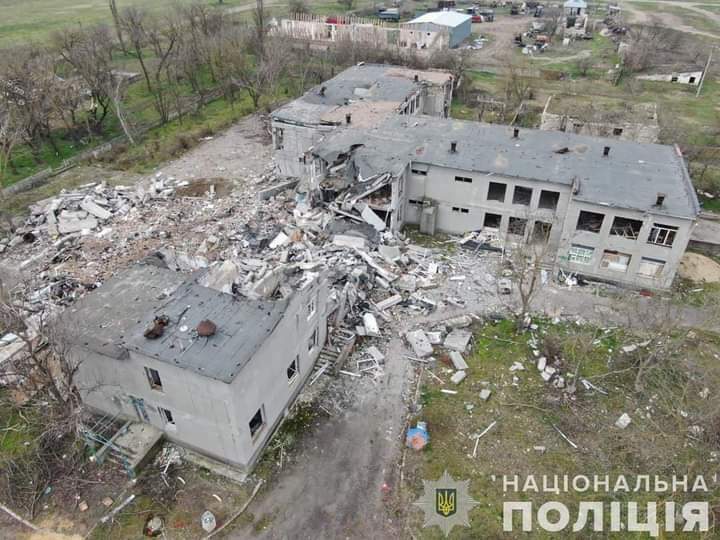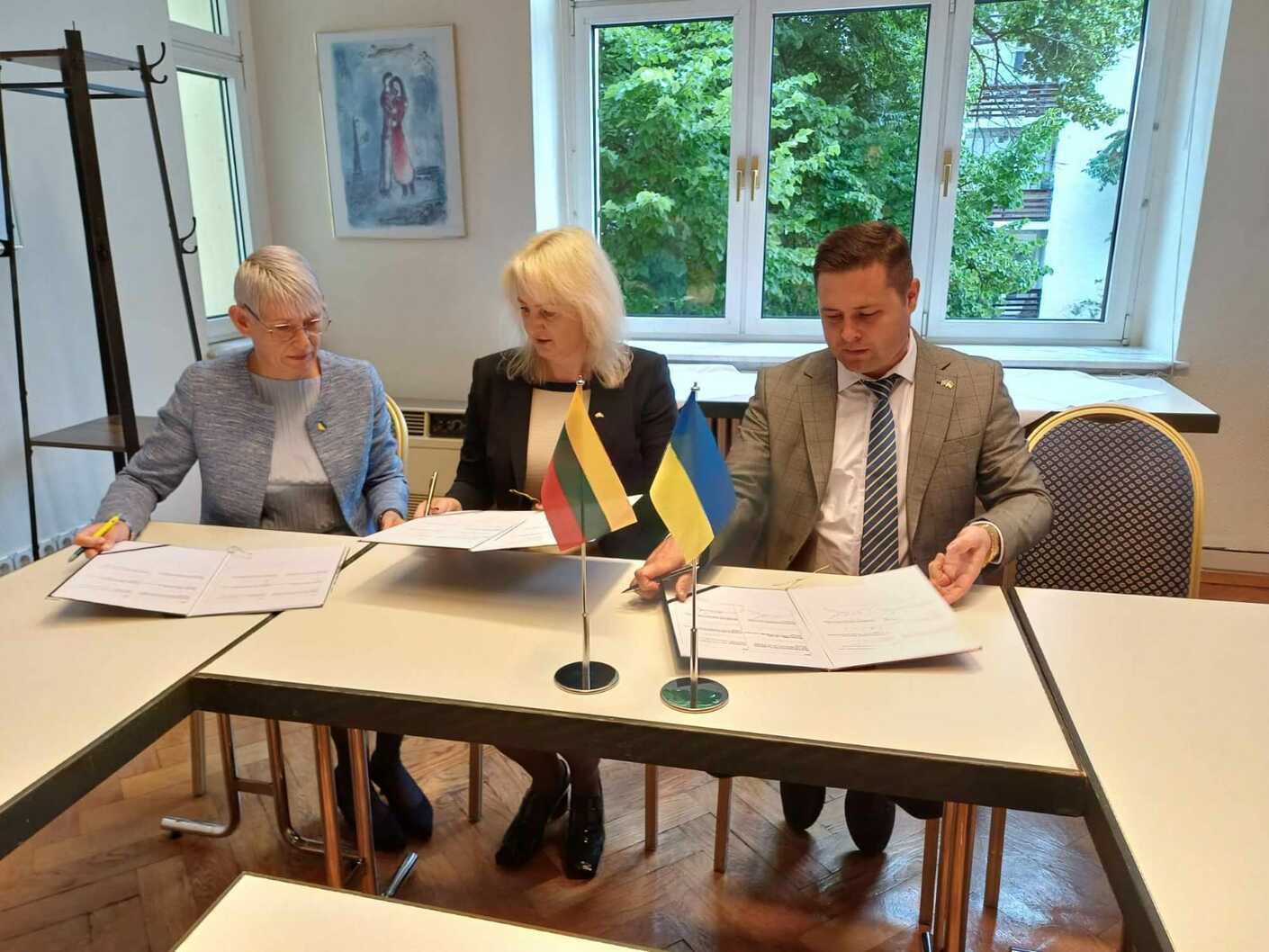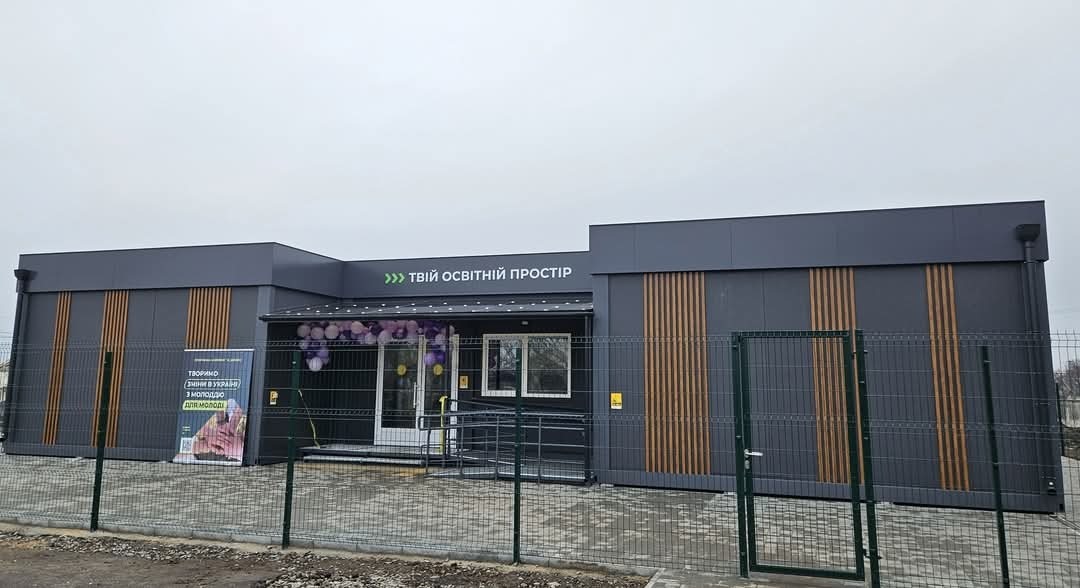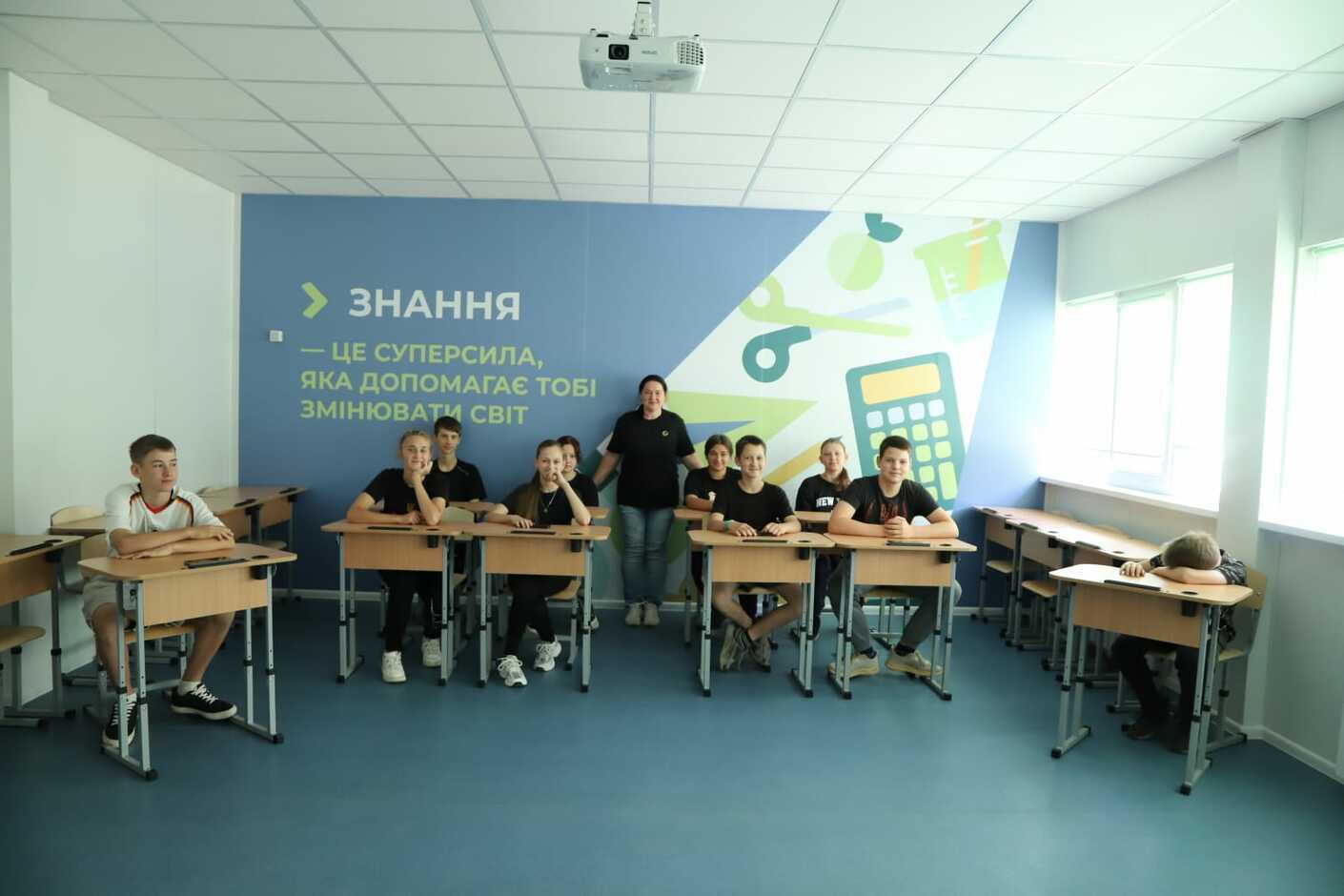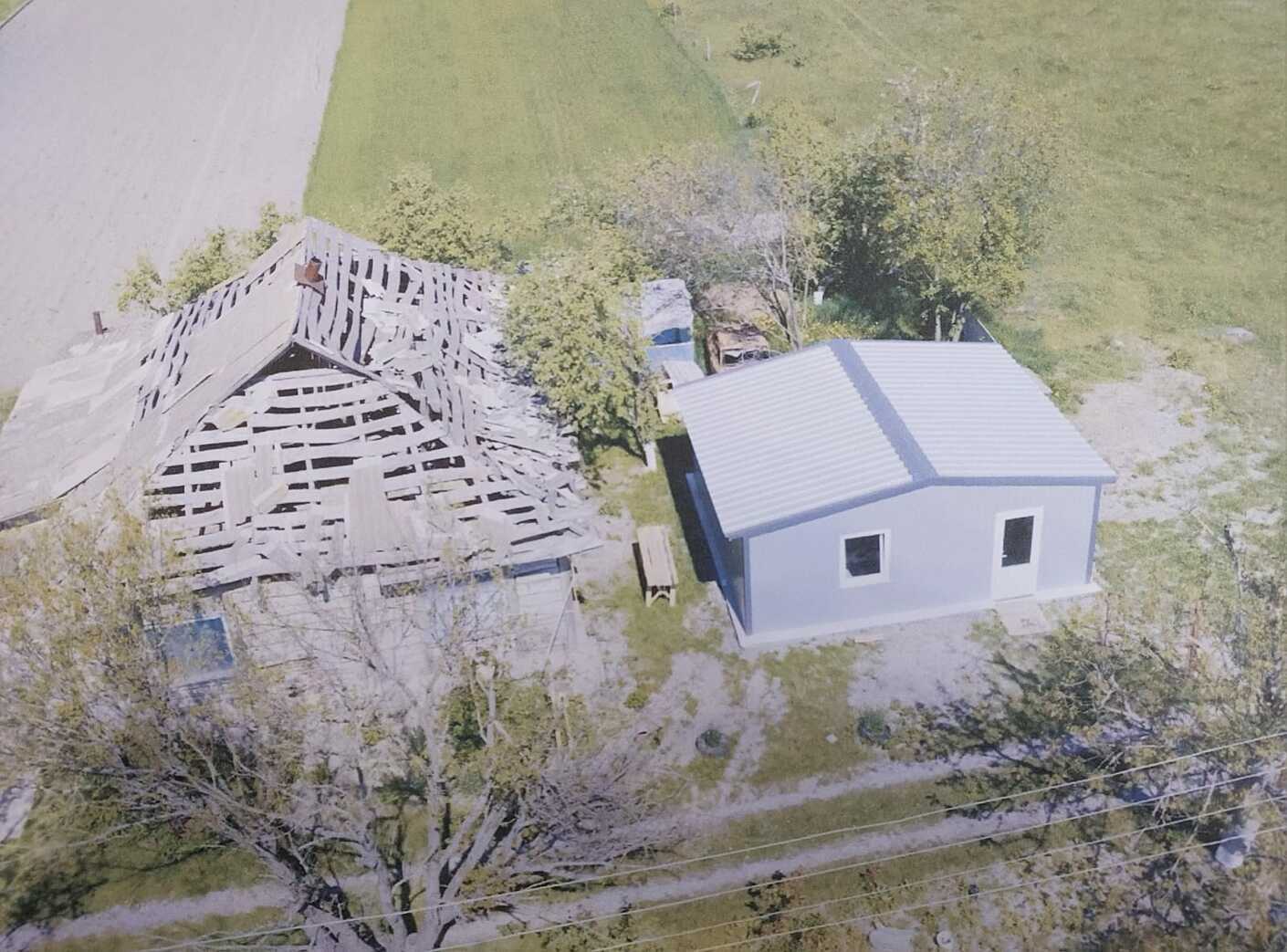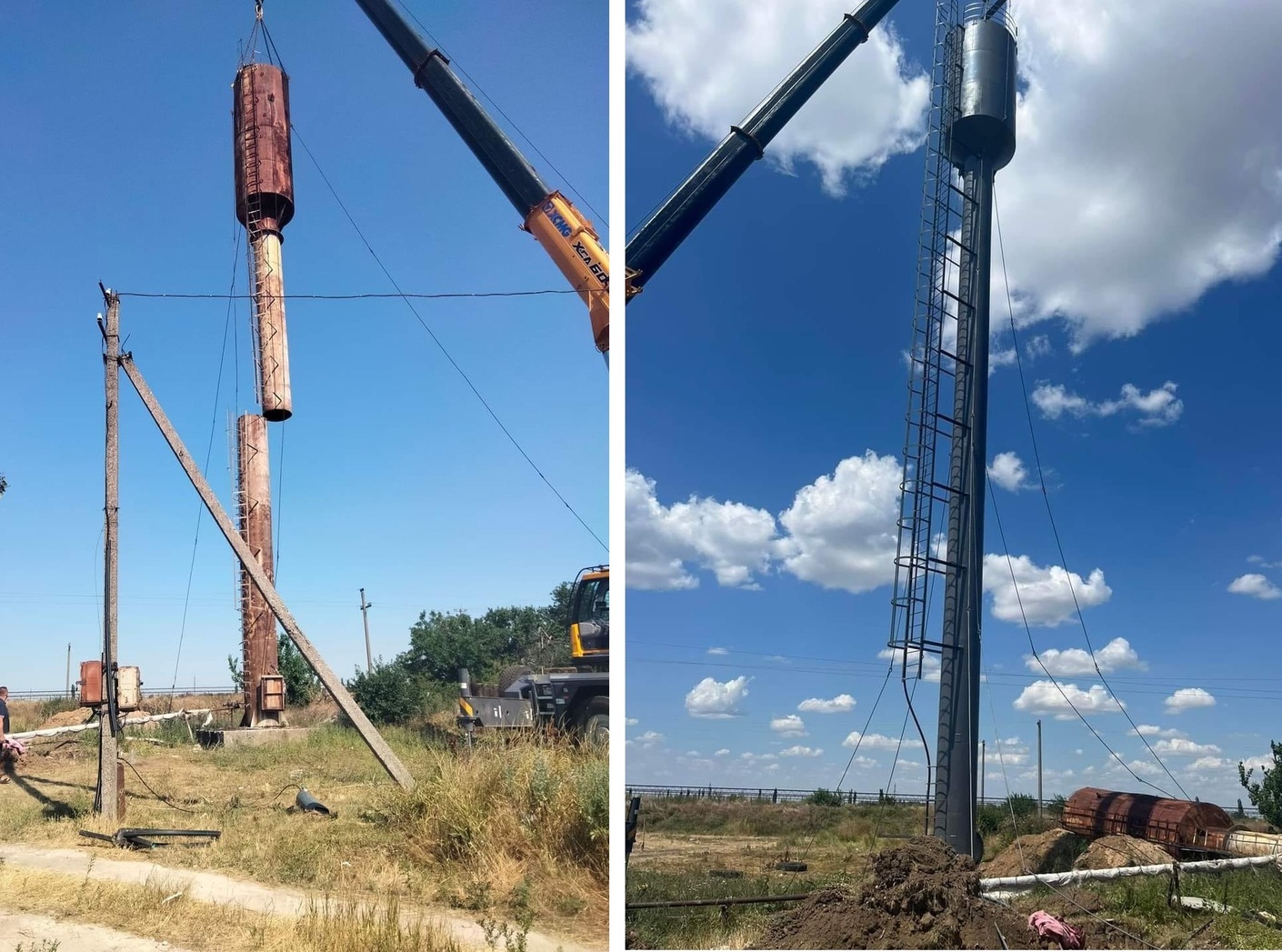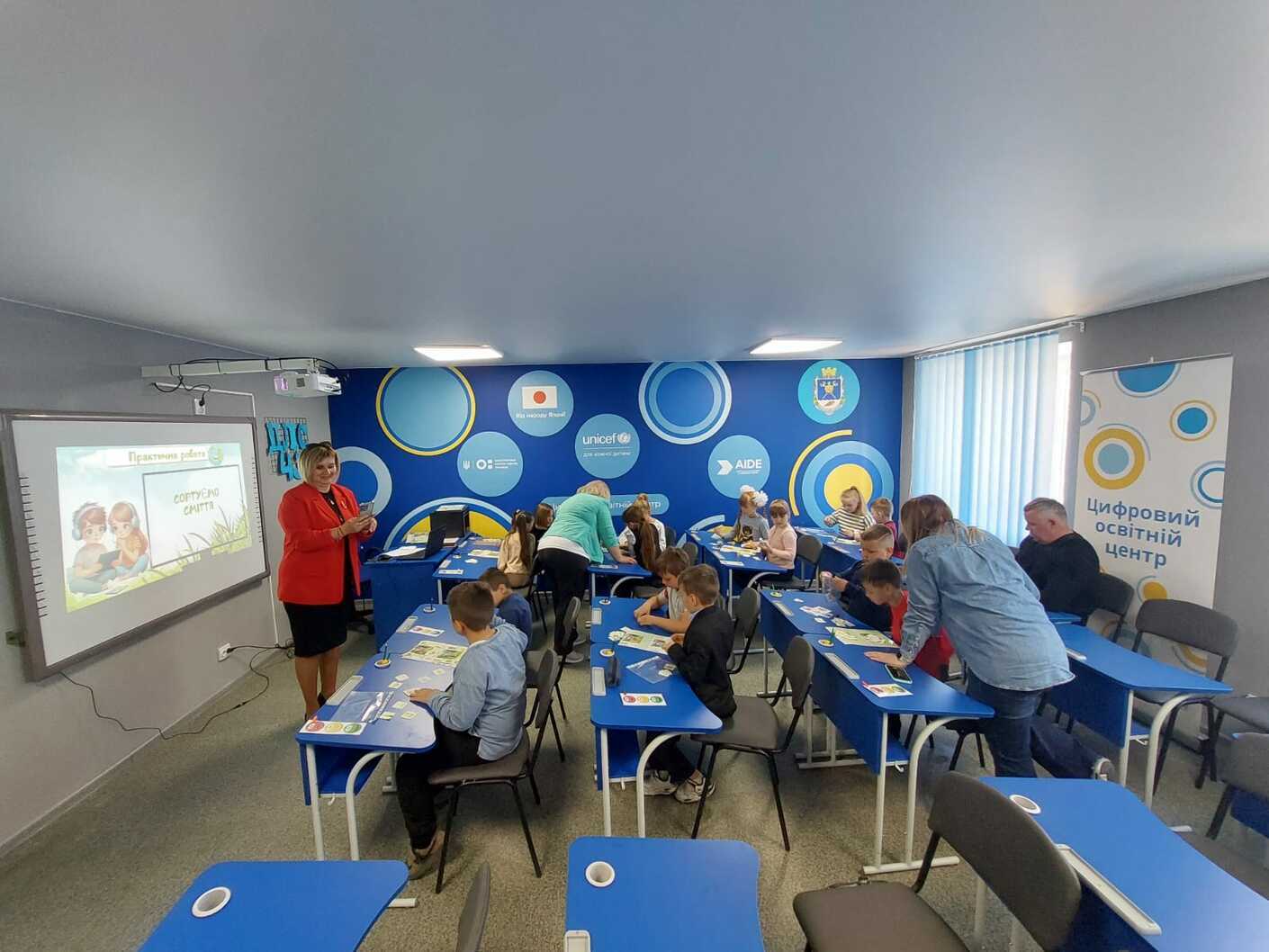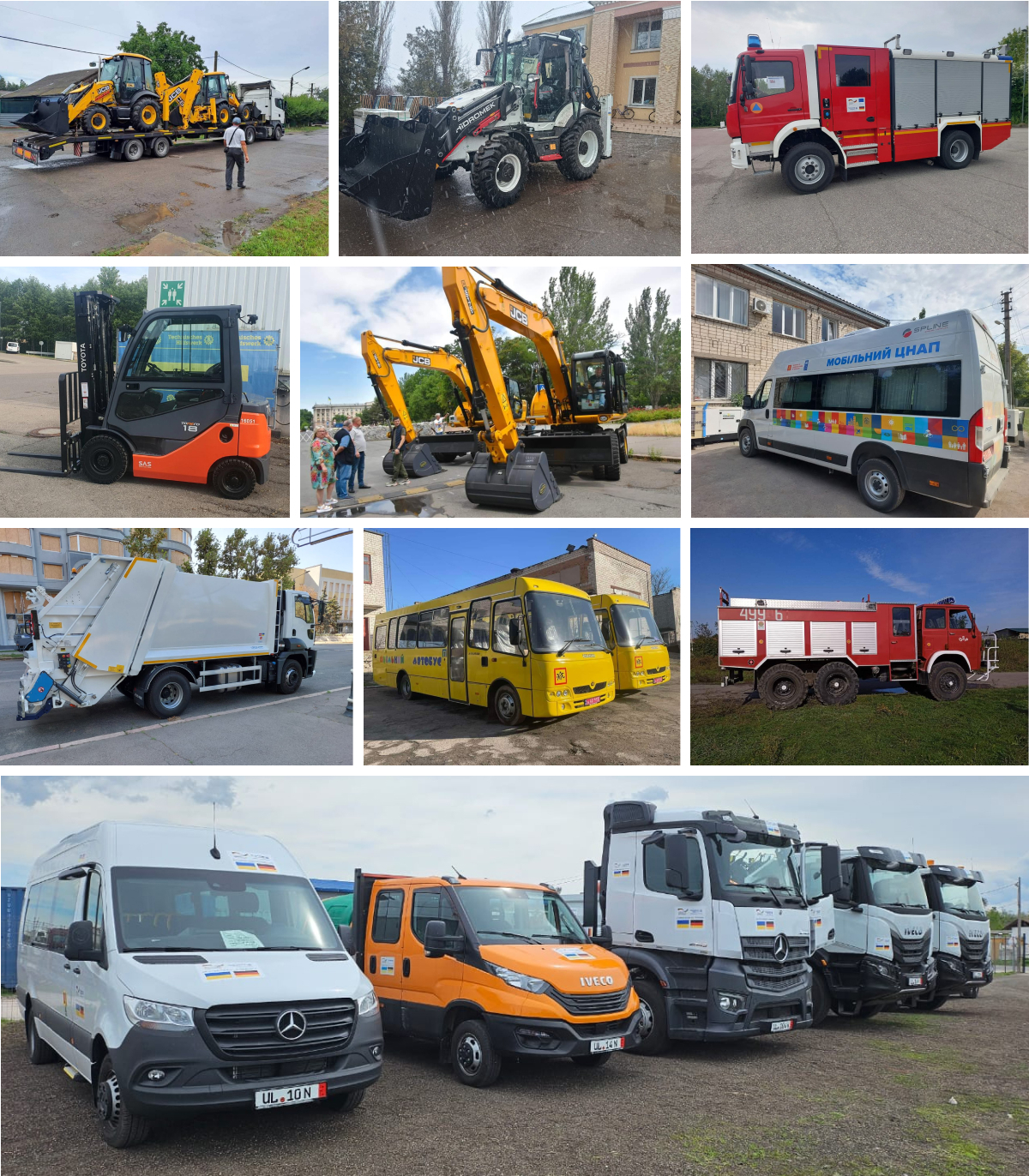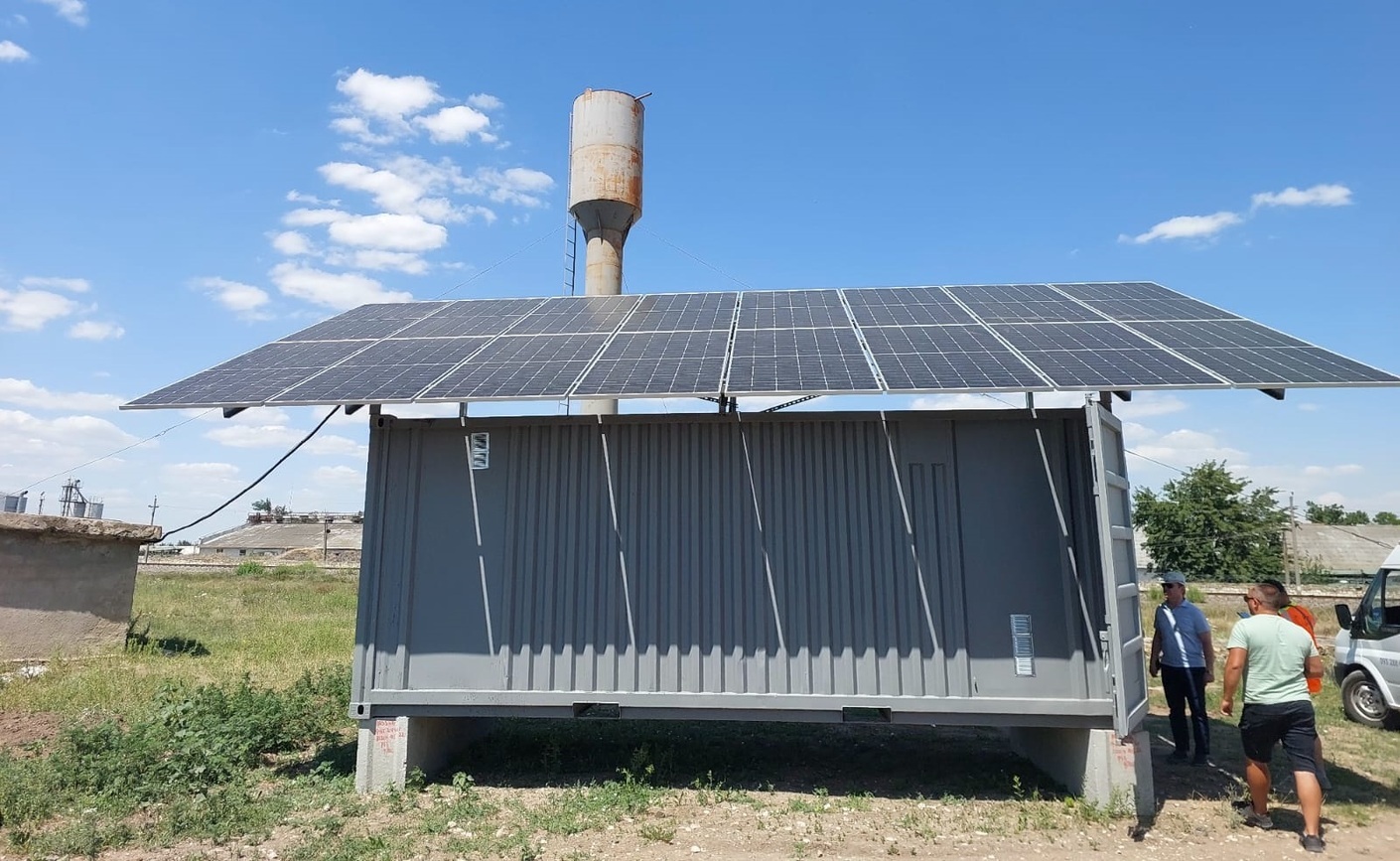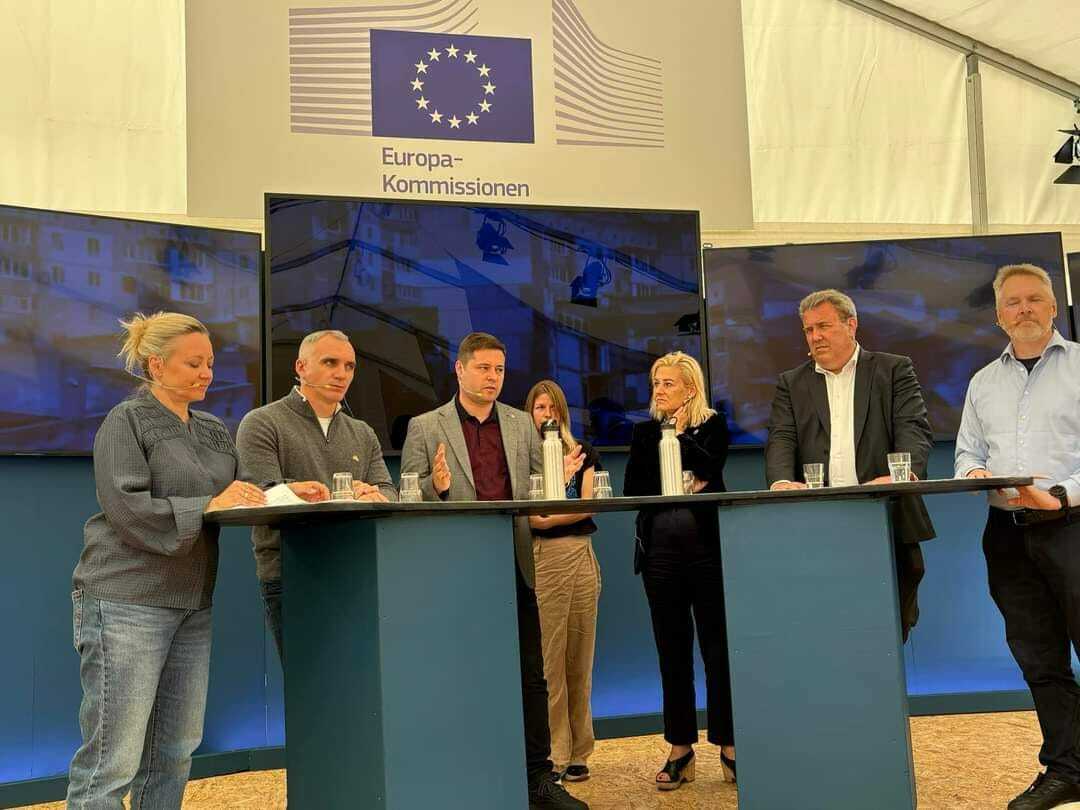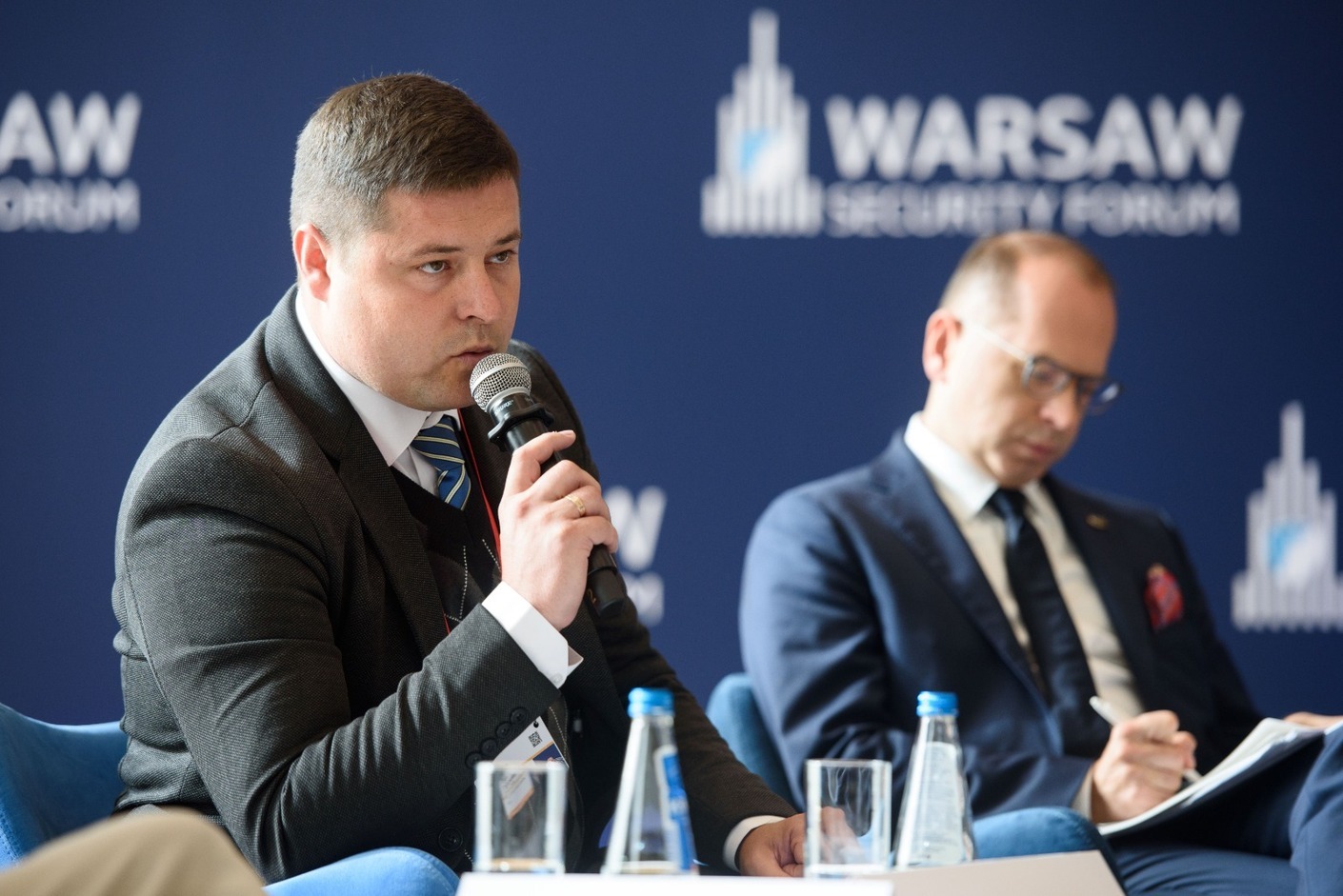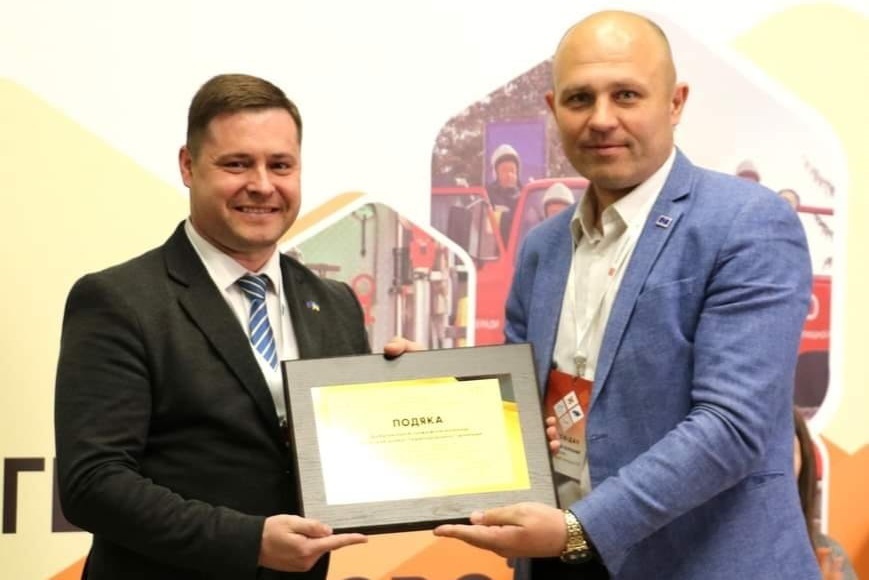Village leader for a hundred thousand dollars
Oleh Pylypenko, Head of the Shevchenkove community in the Mykolaiv region, explains how to prevent the community from disappearing from the map of Ukraine
By Dmytro Syniak
Shortly after his release from Russian captivity, Oleh Pylypenko was asked whether he had visited a psychologist. He responded playfully: ‘After my visit, they’ll need a psychologist themselves.’ During his three months in solitary confinement in a Russian prison, he experienced beatings, torture, mockery and humiliation... He thought he would never return home. Despite numerous appeals from the Ukrainian side, the Russians did not include Pylypenko in the prisoner exchange lists for a long time. The reason was trivial: according to the Geneva Convention, civilians cannot be exchanged because nobody has the right to detain them. It was not until early 2025 that the first official mechanisms for the exchange of civilians were launched. This is why Vitalii Kim, Head of the Mykolaiv Regional Military Administration, offered USD 100,000 as a ransom for Oleh Pylypenko. However, the Russians refused, fearing accountability to the FSB. Later, the exchange was organised.
Since returning home, Mr Pylypenko has brought much more money to the community and the region than the Head of the Mykolaiv Regional Military Administration was willing to pay for his return. His community has quickly become a leader among rural communities in the Mykolaiv region in terms of reconstruction, international cooperation, attracting external funds and encouraging residents to return. Mr Pylypenko’s achievements were quickly recognised in Kyiv, and he was offered a promotion. However, he refused, saying: ‘How can I go to Kyiv when my community is in ruins?’ We talked to the head of the Shevchenkove community about these achievements, the return of residents, and the development of local businesses.
Oleh Pylypenko, Head of the Shevchenkove village community
The first photo after the release from captivity. 10 June 2022. Oleh Pylypenko is in the centre. To his left are Viacheslav Kravchenko, Starosta of the Shevchenkove community, and Oksana Pasichniuk, Local Councillor
Information from Decentralisation
Shevchenkove community, Mykolaiv region
Date of amalgamation: 16 November 2020
Number of localities: 13. Eight of these have experienced occupation
Population: before the full-scale war – 14,000 residents, now – 12,000 residents
Area: 296.81 km2
Budget for 2024: UAH 150 million, of which own revenues are UAH 70 million
Key features: 20 km from Mykolaiv
War casualties: 58 civilians killed, more than 100 wounded, 2,700 houses severely damaged or destroyed
Shevchenkove community on the map of Ukraine
Map of explosive contamination in the Shevchenkove community. The darker the colour, the more contamination
Aftermath of the ‘Russian World’
What losses did the full-scale Russian invasion cause to the Shevchenkove community?
The hostilities killed 52 people, including a starosta and a local councillor, and wounded over 100 local residents. More than 20 people from other communities trying to cross the demarcation line to the north were shot by Russians on our road. Five of our residents were killed by landmines and around 20 were injured. Several dozen sick and elderly people died due to an inability to provide timely medical care... These losses are the most painful. A house can be rebuilt, but a dead person cannot be brought back. I have to live with it now…
What to live with? What do you mean?
I feel guilty for not being able to convince many of these people to evacuate immediately. Several of our relatively young, working-age residents died in a stupid way — for example, one was killed with a hoe in their garden. The shelling started and he simply had nowhere to hide. Even now, the potatoes he stayed for are of no use to anyone. Had he left then, he would have returned and worked for himself and the community.
For nine months in 2022, the front line passed through the territory of the Shevchenkove community. Several of your villages were occupied. What is the scale of the problem of clearing the territory of mines and unexploded ordnance now?
I am proud to say that we were the first community in Ukraine to systematically demine agricultural land. In other words, we were involved in the first state pilot project on demining. While we can say that the stars aligned, we also contributed to this. We understood that demining the fields would signal to farmers that they could return and continue cultivating the land.
What about the farmers? Did they return?
Due to the high number of applicants, we also had to decide which fields would be cleared first and which last. To achieve this, we developed a simple formula whereby the fields belonging to enterprises that provided the most jobs per hectare and paid the most taxes were cleared of ammunition and mines first. This sent an important message to all our entrepreneurs, who understood what we needed and for what we would thank them. Conversely, those who had been operating in the shadows prior to the large-scale invasion have now experienced a boomerang effect. Our action has dramatically changed the situation with tax payments in the community.
Oleg Pylypenko next to an unexploded Russian missile
The school in Zelenyi Hai village, where starosta Mykola Strutynskyi and school principal Oleksandr Hnedko were killed in a Russian strike. It was subsequently decided that the school would not be restored and it was dismantled
The Shevchenkove community and Neo-Eco (France) and CPVA (Lithuania) signing a Memorandum on the construction of a brand new school (with a bomb shelter) in Zelenyi Hai village. June 2024. Construction work is expected to begin in October 2025
Temporary educational centres, which are a kind of mini-schools that appear instead of destroyed educational institutions. There are currently four such centres in the Mykolaiv region, two of which are in the Shevchenkove community. The centres were funded by the American foundation IREX
How the Shevchenkove community managed to retain 87 per cent of its residents
What happened to the community’s ordinary residents? Did they return? How many people has the Shevchenkove community lost during the large-scale invasion?
Prior to 24 February 2022, the community had a population of 15,000. Following the liberation of Kherson in November 2022, approximately 2,000 residents remained. Now, 12,700 people live here, meaning 87 per cent of residents have returned. This is one of the best results for a community like ours in Ukraine! Our main task in the first months after the Russians were driven out across the Dnipro River was to bring people back. Firstly, we had to provide housing for people whose homes had been destroyed and looted. With the help of various partners, we repaired people’s homes and bought household appliances, stoves, generators, bed linen and furniture... The calculation was simple: people would return if they saw that they would be helped and not left alone with their problems. Conversely, if people see that no one helped their neighbours, they will most likely decide not to return...
In the months following the liberation of Kherson, communities in the surrounding area found it difficult to access any support, as all international donors focused their attention on the regional centre. Did the Shevchenkove community experience this problem?
We did more than just feel it; we tried to solve it, too. To this end, we organised pickets along the Kherson highway. We wrote messages on posters such as ‘Remember us!’ and ‘We need help too!’ At that time, more than 2,700 facilities in our community had been damaged. It was not only residential buildings that were in ruins, but social institutions too: schools, kindergartens, clubs, outpatient clinics, shops, petrol stations and hotels... The eRestoration programme did not exist yet; it only appeared in May 2023. However, people had to be returned immediately.
What exactly did you do to bring people back?
We managed to obtain a lot of thick plastic film through a charitable organisation and used it to cover the roofs of houses that still had some structure. We did not pay attention to whether the owners were abroad, elsewhere in Ukraine, or in our community. For us, everyone was equal. The only problem was prioritisation, as it was unrealistic to help everyone at once. So, once again, we developed a transparent rating system, according to which disabled people, families with children and families of military personnel were given priority in receiving assistance. When the eRestoration programme was launched, we started helping people prepare documents. The further away from the community people lived, the fewer documents they had. For decades, grandchildren had been living in their grandparents’ houses without realising that they had no property documents. Unfortunately, this is a common situation in our country.
How much have the residents of the Shevchenkove community received in compensation payments under the eRestoration programme?
More than UAH 600 million was paid out, including over 300 payments for housing that had been completely destroyed. The most expensive certificate I saw allowed for payments of UAH 4.2 million. Some people received building materials for repairs, while others received modular houses. Some chose to live in a dormitory that we quickly repaired and equipped with everything necessary. People live in these dormitories as if they were living in communal apartments. This is a good option for those waiting for payments under the eRestoration programme or collecting documents for this purpose.
Delivery of bread, water and food to the de-occupied villages of the community. Autumn 2022
Modular house next to destroyed housing in the Shevchenkove community
The Dutch government is planning to build two neighbourhoods in Shevchenkove
What should communities do to encourage their residents to return?
There is nothing that can be done about it now. If people left three years ago, they will have adapted to their new place of residence by now and integrated into their new community. Their children started attending kindergartens and schools there. Unless internally displaced persons can level the situation a little bit.
How can the number of such people in the community be increased?
There are around a thousand internally displaced people (IDPs) in our community. However, around half of them are domestic migrants. In other words, they are people who used to live in villages that were later destroyed. But believe me, it was not easy to keep these people here either... We are now trying to do everything possible to accommodate more IDPs. To achieve this, we are actively promoting two projects to build new neighbourhoods of single-storey houses in two of our villages. The documentation for both sites is ready. These neighbourhoods will not be built quickly, but I am counting on them. After all, not only our people, but also residents of the entire Kherson region who cannot receive payments under the eRestoration programme for one reason or another should be able to live there. A community’s greatest wealth is its people, so I am doing everything within my power to start construction as soon as possible. However, not much depends on me.
And on whom does it depend? How did you manage to find partners who agreed to build two neighbourhoods in your community? It looks like a complete fantasy for a rural community.
I cannot reveal all the details. I can only say that the personal connections I always try to establish wherever I go played a role. Another factor was a well-designed application and a thorough justification for our participation in the project. The path was very difficult in general, but we walked it without thinking about whether we would win or not. However, it turned out that we knocked and the door was opened. This project will be funded by the Dutch government through the Open Door Ukraine.NL fund. Such neighbourhoods will be built in three communities, including ours, as well as in the Chernihiv and Odesa regions. All the houses will be made of environmentally friendly materials, and it is initially planned to build a production line for these materials in each community. As we are the last to be built, we will have to wait about a year. However, the project will benefit from the experience gained in previous communities. Now, we need to prepare the plots by bringing all communications, including roads, to each house, which is a rather expensive and lengthy procedure. So, it is fortunate that we still have time. The result should be around 50 houses for approximately 200 residents.
What kind of IDPs move to your community?
Different ones. For example, there are several farmers from the Kherson region, who lost their irrigation system as a result of the fighting. We have this system working, and now Kherson farmers grow vegetables here. However, this process requires a lot of labour, so seasonal workers come to us too, and some of them settle down here. Farmers themselves also buy houses from us, bringing their former employees with them.
You said that in 2022 you tried to return all the residents as soon as possible. But how do you deal with the Russian threat when you are only a hand’s reach from the Dnipro River, where the invaders are stationed?
All community leaders need to understand that communities that return people will survive. Other communities may disappear from the map. In terms of danger, we should evacuate everyone in Ukraine abroad and leave only the military. But that is utopian thinking! Life goes on, and it must continue to do so. Yes, if by some chance the enemy crosses the Dnipro River, we will evacuate our people. But until then, we must continue to live despite the Russian missiles and drones. These are our realities now — what can we do? If we had not returned people to the community back in 2022, it would have been a disaster by now. We would not have been able to convince international donors to rebuild our schools and replace water pipes at a cost of tens of millions of hryvnia. Most importantly, we would not have been able to restart our business. The owners of our factories were planning to move production elsewhere, but when almost all their employees returned, they changed their minds. The position of the village council also played an important role, because we always support entrepreneurs in everything.
Replacement of water towers in the Shevchenkove community. A total of 12 such towers were replaced, some of which were destroyed during Russian shelling
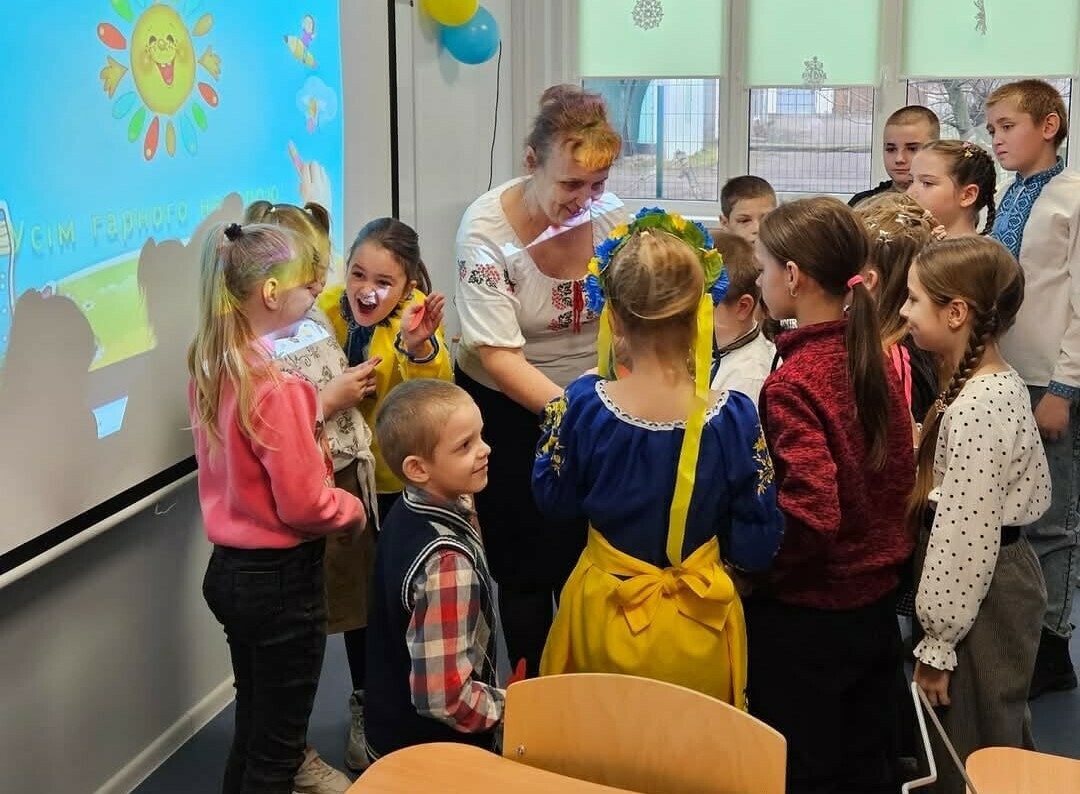
One of the educational centres built in the Shevchenkove community at the expense of UNICEF and the Government of Japan
How to develop local business?
Every community leader could say that. But I think there is much more behind your words than behind anyone else’s. Could you tell us about a time when the local authorities successfully promoted business development?
Sure. Prior to the full-scale invasion, the largest vegetable market in Ukraine was located in Velyki Kopani, on the left bank of the Dnipro River. We want its successor to be located here. We have a plot of land and an investor. Such a market can generate a whole infrastructure, so we are taking a number of steps to establish it. Would you like another example?
Of course!
One of our companies built wells to supply water to its production facilities on land with an inappropriate designation. According to the law, the company had to pay UAH 12 million to change the designation. This was a considerable sum, which brought the company’s development to a standstill. The owner doubted whether it was worth investing under such conditions. However, when the legislation changed slightly, I called the owner immediately and offered to change the land’s designated purpose free of charge. However, he would have to pay much more for the lease of this plot in future. He gladly agreed… Here is another example. Although one of our companies was registered in another region, it was paying us UAH 1 million in land tax. I offered to reduce this amount to UAH 700,000, provided that the company re-registered with us. This way, we received an additional UAH 1 million in personal income tax, while the business saved UAH 300,000. This is the win-win strategy in action! Business is not a cash cow or a means of installing lanterns in the park for free and then boasting about it at some celebration. No! Businesses have to pay taxes and employ people, and we will install the lanterns ourselves.
What about the social projects that communities often implement with the help of businesses?
Social projects should not be corrupt: ‘We will turn a blind eye to how much you pay us for the land, and in return, you will repair our school.’ Once a business feels comfortable with you, it will initiate social projects of its own accord. This is exactly what PepsiCo, which has a large factory in Ukraine, does. It is currently installing water purification systems in all our schools. When the water treatment plant was damaged by Russian drones last year, PepsiCo provided drinking water to all our residents until it was repaired. The company also helped with the repairs, which cost UAH 1 million. If you adopt a positive attitude towards business and value it, if you even openly lobby for its interests with the regional administration, then business will definitely lend you a shoulder in difficult times.
Could you now tell us more about lobbying the business community with the regional administration?
After the Russians fled across the Dnipro River, they blew up all our canal bridges, disrupting the logistics of our businesses. We did everything we could to ensure the restoration of the most important bridge as soon as possible. For this purpose, the Shevchenkove village council raised UAH 6.5 million through the United24 platform. Without this, we could have lost our largest enterprises. We also defend the interests of our enterprises before the regional administration during power outages. We always emphasise that big business is not only our strength, but also the strength of the whole country.
Opening of the restored bridge…
… and the first truck on it
Our utility sector has never received such funds as now!
Over the past year, the Shevchenkove community has attracted UAH 300 million in external funding. How did you manage to do this?
When I was elected community leader, the first thing I did was introduce the position of deputy responsible for international grant activities. At the time, many local councillors — including those from the now-banned Opposition Platform for Life party — accused me of populism. Others simply did not understand why this was necessary, as we were the first rural community in the region to introduce such a position at that time. By the way, we hired a PhD in engineering with fluent English. As a result, last year we attracted external funds equivalent to two annual budgets, and the year before that, one. Can any other rural community claim to have collected 32 utility vehicles from donors alone over the three years of the full-scale invasion? These included school buses, excavators, garbage trucks, freight trucks and fire engines...
What investments in the utilities sector are you most proud of?
We have replaced over 30 kilometres of water pipes, installed 12 water towers and replaced the sewage systems. We have also built 10 hybrid solar power plants on these systems and at the water intake. Now, even during difficult blackouts lasting 12 hours, we have water. In summer, the stations incur no expenses at all. Over the past few years, we have invested around UAH 50 million in our housing and communal complex. It has never received so much before! In return, we have achieved a whole new level of efficiency. The new water pipes are much more effective than the systems built between 1962 and 1968, which were often tampered with by people trying to save money. Thanks to these measures, we have managed to prevent utility tariffs from rising since 2020. However, since the economically justified tariff for households is still three times higher than the current one, we had to inject an additional UAH 7 million into our utilities last year alone. However, we believe that a tariff increase would be too traumatic for people who have already suffered from the war. They have had enough of challenges!
Is there a shortage of staff in the utility sector of the Shevchenkove community?
Indeed, there is! Some might say that we have it easier than others because of our location between Mykolaiv and Kherson. However, there are many similar communities nearby, and their results are completely different. Previously, most of our residents used to commute to the regional centres for work, but now everything is the opposite. For example, both of my deputies now live in Mykolaiv. They know that we spare no expense in paying good salaries to specialists and give them complete freedom to make decisions. This approach is effective because it motivates people. Speaking of staff, it is probably worth mentioning that when the boundaries of the districts were changed, we did not sit idly by and sent out job offers to the best employees of district councils and administrations. And many of them joined us: a lawyer, the head of the social protection department, the head of the children’s service, the head of the land resources department, and others. Another part of the team previously worked for the Nibulon and Myronivskyi Hliboproduct agricultural holdings. In other words, we combined officials with representatives of big business who know how large corporations are built and how they work. This combination produced the best possible results.
How can former employees of agricultural holdings help the village council?
For example, we introduced a programme to support small businesses, primarily farms, with their help. Now, these farms can receive a subsidy of between UAH 20,000 and 50,000 from the local budget. This is very important, so please emphasise this in your article. For us, individual entrepreneurs are not just a source of tax revenue. They are, first and foremost, a source of jobs, and an increase in their number guarantees the development of the community as a whole. We want them to be as numerous as possible. That is why we cooperate with the Mercy Corps International Charitable Foundation and the Laska Charitable Foundation, which offer grants ranging from USD 3,000 to 150,000 for growing vegetables and grain crops. We not only give recommendations to our small businesses, but also ask for them, emphasising that during the Russian occupation, literally all assets in our community were either burned or looted…
Pride of the community: a fleet of vehicles received from donors
Replacement of pipes, for which the community has been waiting for more than 50 years
Solar panels at the facilities of a local water utility
How to win in the competition for donor funds?
How easy or difficult is it to find donor funding?
Many ordinary people who form opinions about the work of the Shevchenkove village council based on our official Facebook page believe that we are always in contact with donors carrying suitcases full of money. After all, we open something almost every month, purchase new utility vehicles, and announce the launch of a project. Unfortunately, this is not the case in reality. Many communities have been affected by the war and are forced to compete with each other for scarce resources, especially since USAID closed and stopped channelling half of all donor funds to Ukraine.
How to win in this competition?
Only in terms of quality. If you have a well-designed project with a comprehensive feasibility study and a competent team, your chances of securing funding are quite high. A key factor in success is constantly searching for grant proposals and working closely with the donor until the project is implemented. In fact, these few words do not reflect the complexity of the work or the costs involved. Time, staff and money are all essential. Last year, I spent around two and a half months on business trips to various foundations, forums and similar events. I am constantly in touch with international organisations, as well as representatives of large companies and NGOs…
How can civil society organisations help raise external funding?
This is a powerful resource that many communities unfortunately overlook. This is a big mistake! After all, we raise about a third of all funding through NGOs. After all, many donors do not work with local governments or utility companies.
Speech in Denmark at the European Commission conference on the possibilities of assistance in the reconstruction of de-occupied and frontline communities in the Mykolaiv region. Oleh Pylypenko, third from left, and Oleksandr Sienkevych, Mayor of Mykolaiv, second from left. 2024.
Oleh Pylypenko speaks at the Security Forum in Warsaw about advocating for the exchange of prisoners of war
Oleh Pylypenko, a participant of the Ukrainian Hub in Brussels
Oleksandr Korinnyi, Head of the All-Ukrainian Association of Communities, presents Oleh Pylypenko with a certificate of appreciation to the Shevchenkove Fire Brigade from the State Emergency Service of Ukraine
To make the Shoulder-to-Shoulder project even more successful, the state should have a share in it
How have you coped with the closure of international projects, including USAID?
Almost every day, we received letters from our partners informing us of the forced closure of a USAID-funded project. Within a week, the total value of suspended projects had reached UAH 80 million. We were completely devastated. When I received another letter, I was reluctant to open it because I already knew what it would say. However, we later regained control and started negotiating with donors in Europe, Asia and America. We explained and asked... The community’s reputation for completing everything it starts helped. In two months, all the projects had been distributed to other partners. And now they are all successfully completed.
Does your community take part in the ‘Shoulder-to-Shoulder: Cohesive Communities’ project?
Yes, our partner is the Korosten community in the Zhytomyr region. Their representatives visited us, and we visited them. The mayor has worked in Korosten for 28 years, so his team is highly coordinated, experienced and strong. The Korosten community sent us a lot of building materials, which we used to renovate our community centre. We also sent 25 children with various cultural and creative achievements to the Zhytomyr region on holiday.
What are your impressions of the Shoulder-to-Shoulder project?
To make it even more successful, the state should contribute. For example, if the state joined two communities in restoring a facility, the work would be completed much faster. It is no secret that transferring funding from one community to another is always problematic. No one has any spare money these days.
Has all your business recovered?
Unfortunately, not all of it. For various reasons, several petrol stations, cafés, restaurants and hotels have closed... One company that employed 600 people moved to a safer region. However, we are not counting on government subsidies because this is a dead end. Today there is a subsidy; in a year it will be smaller, and then it will disappear completely. The community will then become unsustainable and eventually be amalgamated with a more successful one. I do not think I will surprise anyone by saying that, once hostilities have ended, Ukraine will face a new administrative and territorial reform. This should be perceived as an inevitable reality. If the leadership of certain communities does not draw the appropriate conclusions, these communities risk disappearing from the map of Ukraine.

Tags:
war stories special project war stories side by side report
Область:
Миколаївська областьГромади:
Шевченківська територіальна громадаSource:
Decentralization portal

05 July 2025
Шлях України до повоєнного доброго...
Четверта сесія Діалогу високого рівня щодо доброго демократичного врядування відбулась у Львові 3-4 липня 2025 року,...
05 July 2025
10 липня – вебінар «Як зберегти зв’язок з українською освітою для дітей на ТОТ і за кордоном?»
10 липня – вебінар «Як зберегти зв’язок з...
10 липня, о 10:00 розпочнеться вебінар від Швейцарського-українського проєкту DECIDE на тему: «Як зберегти зв’язок з...
04 July 2025
Розробка Комплексного плану просторового розвитку як можливість ефективної відбудови громади
Розробка Комплексного плану просторового...
Не раз доводиться чути, що впровадження просторового планування – не на часі. Але Харківщина доводить протилежне....
04 July 2025
Як громадам успішно залучати зовнішні ресурси - посібник
Як громадам успішно залучати зовнішні ресурси -...
1 липня у Львові в межах Міжнародного саміту мерів за організації UMAEF був проведений воркшоп «Як громадам успішно...


